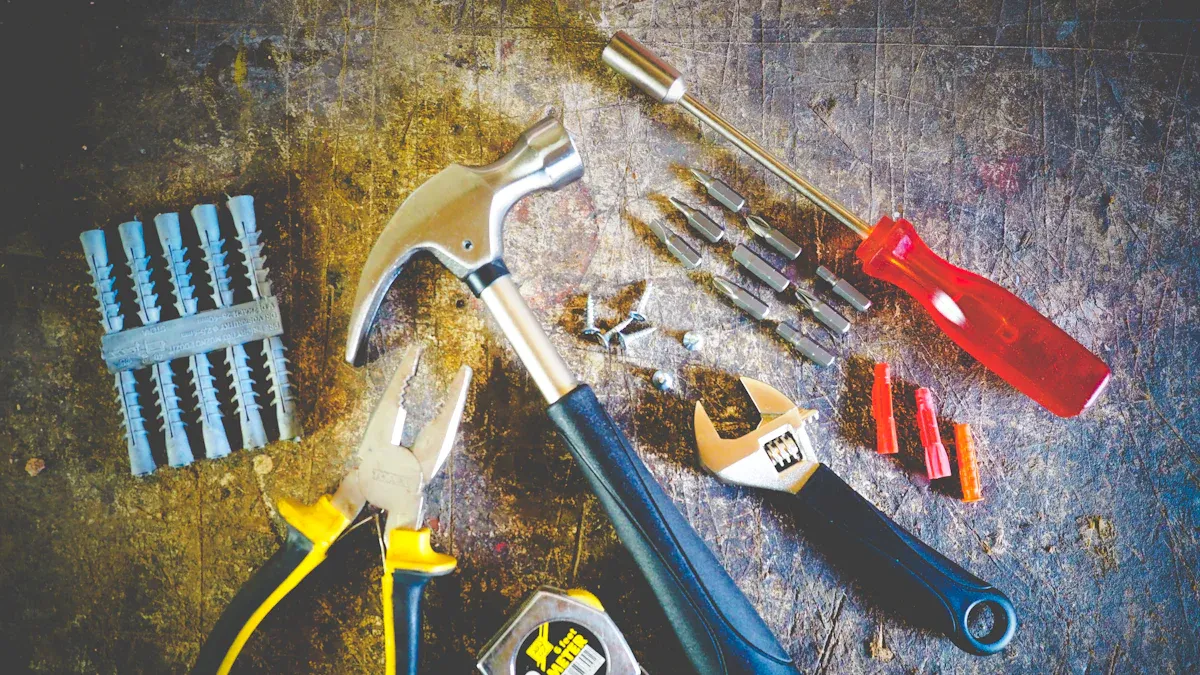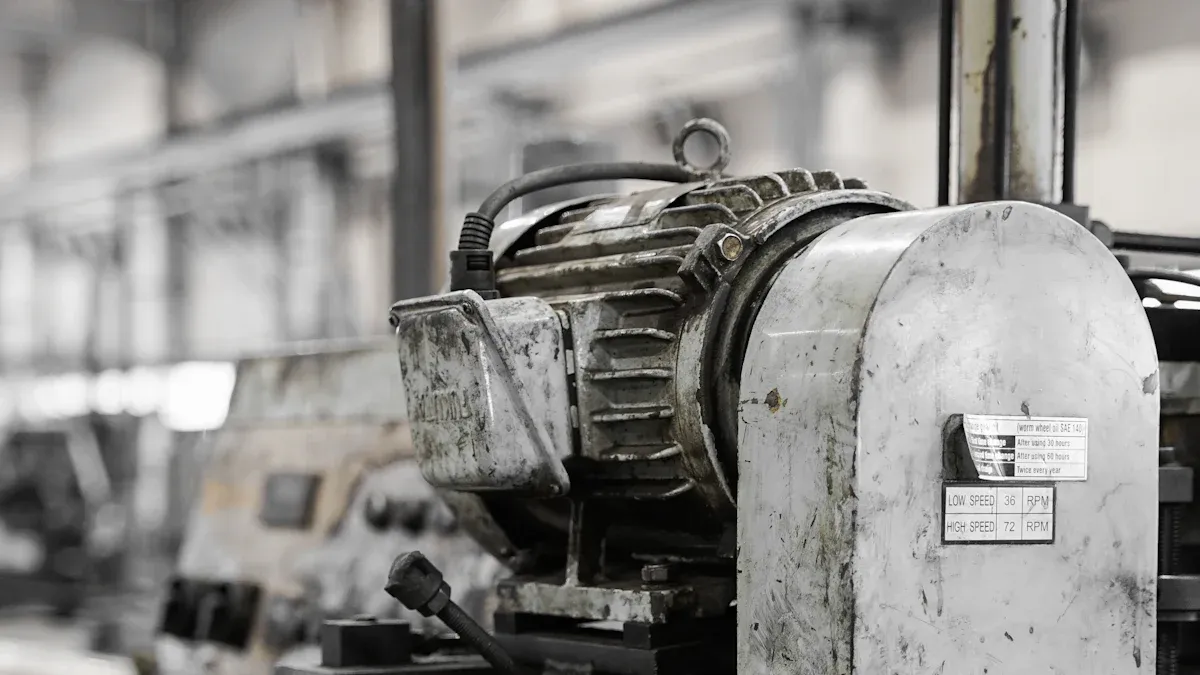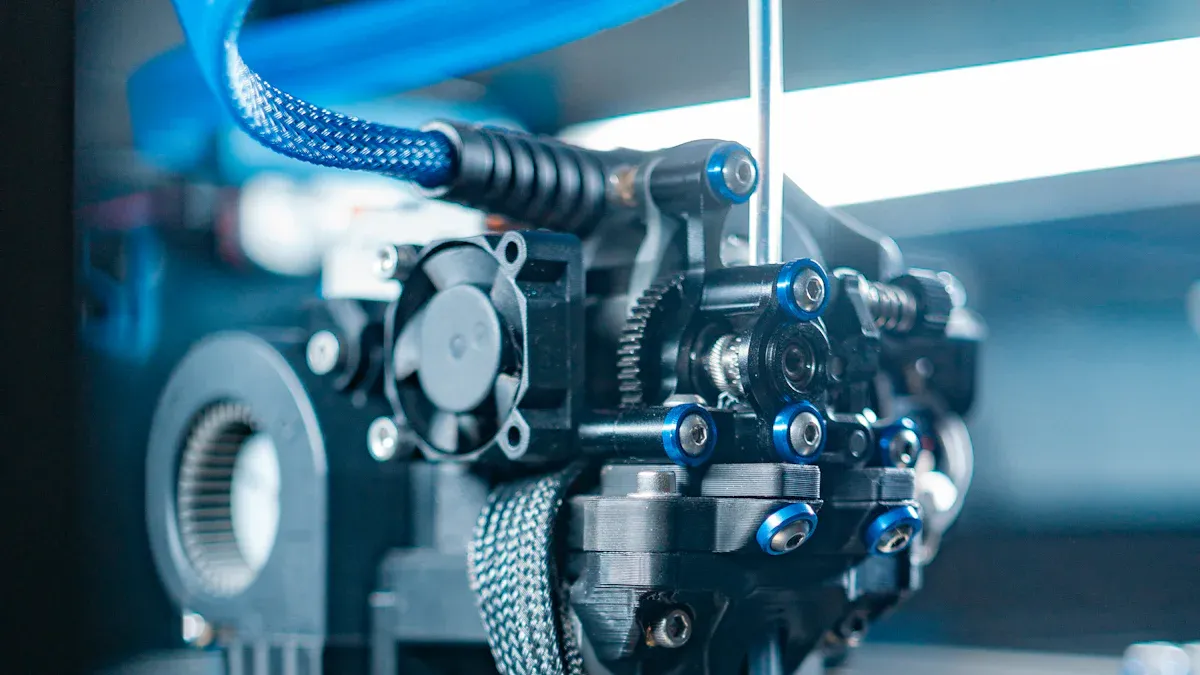
The sand you see in construction projects relies on precise tools to achieve its quality. Among these tools, the hammer in a Sand making machine plays a vital role. It crushes stones into fine particles, producing sand that meets strict requirements. Over time, hammer technology has advanced to improve durability and efficiency, ensuring better results.
In 2025, the demand for sand will reach new heights due to rapid urbanization. You will notice how innovations in hammer design help meet this need. Stronger and smarter hammers will shape the future of sand production.
The hammer is the heart of sand making machines. It crushes raw materials like rocks and stones into fine particles, producing high-quality sand for construction. Without it, sand crushers would fail to deliver the precision needed for modern projects. You rely on these hammers to ensure the sand meets strict size and shape requirements.
Sand making machines equipped with advanced hammers offer remarkable performance. They achieve consistent output sizes, ensuring the sand particles are cubic and uniform. This precision enhances the quality of the final product, making it suitable for demanding construction needs.
Here’s a quick look at the production metrics that highlight the effectiveness of these hammers:
| Metric | Value |
|---|---|
| Output Size | 0-15 mm |
| Feed Size | <50 mm |
| Capacity | 60-520 t/h |
| Processing Capacity | Up to 520 t/h, 30% increase from earlier models |
| Particle Shape | Cubic, good grain shape |
| Energy Efficiency | Low consumption of wearing parts |
| Service Life | Extended due to advanced lubrication system |
These metrics show how sand making machines with modern hammers improve efficiency and productivity. You can count on them to handle large volumes of sand production while maintaining excellent quality.
Precision and durability define the success of sand making machine hammers. Manufacturers now use advanced materials like high-chromium alloys and tungsten carbide to enhance durability. These materials resist wear and tear, ensuring the hammer lasts longer even under heavy use.
The design of the hammer also plays a crucial role. Engineers focus on creating balanced and aerodynamic shapes that reduce energy loss during operation. This design not only improves efficiency but also minimizes the strain on other components of the machine. You benefit from reduced maintenance costs and extended machine life.
Durable hammers ensure consistent performance over time. They maintain the desired output size and shape, which is critical for meeting construction standards. When you invest in sand making machines with high-quality hammers, you secure long-term reliability and cost savings.
The global demand for sand is skyrocketing. Urbanization and infrastructure development are driving this surge. Cities are expanding, and new buildings, roads, and bridges require vast amounts of sand. According to the U.S. Geological Survey, global sand production has reached nearly 50 billion tons annually.
This growing demand puts pressure on sand making machines to deliver higher output. Hammers play a pivotal role in meeting this challenge. They enable the machines to process large quantities of raw materials efficiently. With advanced hammers, sand crushers can handle increased workloads without compromising quality.
You can see the impact of this demand in the construction industry. High-quality sand is essential for creating strong and durable structures. Sand making machines equipped with modern hammers ensure a steady supply of this critical resource. By investing in these machines, you contribute to the growth of urban infrastructure while meeting the rising demand for sand.

You rely on durable hammers to ensure consistent sand making. Recent advancements in materials have revolutionized hammer durability. Manufacturers now use high-chromium alloys and tungsten carbide to create hammers that resist wear and tear. These materials extend the lifespan of hammer s, even under the intense pressure of crushers.
Another innovation is the use of composite materials. These combine the strength of metals wit h the flexibility of polymers. This combination reduces the risk of fractures and ensures the hammer maintains its shape during production. With these materials, sand making machines can handle higher capacity without compromising quality.
Tip: Investing in sand making machines with advanced hammers can save you money on replacements and maintenance.
The design of a hammer directly impacts the efficiency of sand making machines. Engineers now focus on creating aerodynamic shapes that reduce energy loss. These designs allow hammers to crush materials more effectively, resulting in higher output.
Some hammers feature modular designs. You can replace individual parts instead of the entire hammer, reducing downtime and costs. Additionally, balanced designs minimize vibrations, protecting other components of the machine. This ensures that your sand crushers operate smoothly and maintain high efficiency.
High efficiency vertical shaft impact crushers also benefit from these advancements. Their hammers deliver precise output sizes, making them ideal for producing high-quality sand.
Automation has transformed the way hammers are produced. Smart technologies like AI and IoT enable manufacturers to monitor and optimize production processes. These technologies ensure that each hammer meets strict quality standards.
For example, AI-powered systems can detect defects during production and make real-time adjustments. IoT devices track the performance of hammers in sand making machines, providing valuable data for improvements. You benefit from hammers that are not only durable but also optimized for peak performance.
Smart technologies also enhance the sustainability of hammer production. Automated systems reduce waste and energy consumption, aligning with the industry's push for eco-friendly practices. By choosing sand making machines with smart hammers, you contribute to a greener future.
Sand making machine hammers offer significant cost savings in sand production. Their advanced designs and durable materials reduce wear and tear, minimizing the need for frequent replacements. You save money on maintenance and downtime, allowing you to focus on maximizing output.
Modern hammers also improve energy efficiency. They require less power to crush materials, lowering operational costs. For example, high-chromium alloy hammers last longer and maintain consistent performance, reducing the overall cost per ton of sand produced.
Tip: Investing in high-quality hammers may seem expensive initially, but the long-term savings in maintenance and energy costs make it a smart choice.
Modern sand making machines equipped with advanced hammers can process a wide range of materials. This versatility allows you to adapt to different production needs without investing in multiple machines.
Modern hammer mills can handle fibrous materials, plastics, and certain types of waste.
Sophisticated rotor designs and adjustable screens enhance performance, making it easier to achieve the desired output size.
Unlike traditional hammers, which were limited to grains and softer materials, modern hammers excel in crushing hard rocks, recycled concrete, and other challenging materials. This adaptability ensures that your sand crushers remain efficient across various applications.
The productivity of sand making machines depends heavily on the performance of their hammers. Advanced hammers ensure consistent output sizes, which is critical for meeting construction standards. You can rely on these hammers to maintain high production rates without compromising quality.
Modern hammers also reduce downtime. Their durable materials and modular designs make replacements quick and easy. This means your crushers spend more time producing sand and less time undergoing maintenance.
Additionally, the aerodynamic shapes of these hammers improve crushing efficiency. They reduce energy loss during operation, allowing you to achieve higher capacity with less effort. This combination of durability, efficiency, and ease of maintenance makes sand making machines with advanced hammers a valuable asset for any production facility.

The future of sand making lies in sustainability. You will see a shift toward eco-friendly materials in hammer production. Manufacturers are exploring biodegradable composites and recycled metals to reduce environmental impact. These materials not only minimize waste but also enhance the durability of hammers. For example, recycled alloys can withstand the intense pressure of crushers, ensuring consistent performance over time.
Sustainable practices in sand making also address the depletion of natural sand resources. Artificial sand, produced using advanced hammers, offers a viable alternative. It reduces the strain on natural ecosystems while meeting the growing demand for sand in construction. By adopting eco-friendly materials, you contribute to a greener future without compromising on quality or capacity.
Artificial intelligence (AI) and the Internet of Things (IoT) are transforming sand making. Smart technologies allow you to monitor and optimize every aspect of the process. For instance, IoT sensors can track the performance of sand crushers in real-time, providing valuable data on capacity and output. This data helps you make informed decisions, improving efficiency and reducing downtime.
AI-powered systems take automation to the next level. They analyze production metrics and adjust machine settings to meet specific capacity and finished product requirements. This ensures that your sand making machines deliver consistent results, even under varying conditions. The integration of AI and IoT not only boosts productivity but also aligns with the industry's push for sustainable and efficient practices.
In 2025, stricter regulations will shape the sand making industry. Governments worldwide are implementing policies to promote sustainable construction and reduce environmental impact. These regulations require you to adopt advanced technologies and eco-friendly practices in sand production.
Modern sand crushers are designed to meet these standards. They feature advanced emission control systems and energy-efficient designs, ensuring compliance with environmental laws. Additionally, the use of high-quality hammers enhances the precision and durability of sand making machines, helping you meet industry requirements.
The market for sand making machines is expected to grow significantly, with an estimated size of $80 billion by 2025. Key growth drivers include technological advancements, sustainable construction practices, and government initiatives. By staying ahead of these trends, you can position yourself as a leader in the evolving sand making industry.
Sand making machine hammers remain essential in 2025, driving efficiency and sustainability in sand production. These hammers ensure precise crushing, enabling crushers to produce high-quality sand for construction. Technological advancements have improved their durability, reduced maintenance costs, and enhanced operational stability.
Here’s a summary of their performance and impact:
| Aspect | Description |
|---|---|
| Efficiency | Advanced technology enhances performance and reduces operational costs. |
| Sustainability | Improved design reduces wear and prolongs service life, contributing to sustainability. |
| Maintenance Cost | Reduced wear leads to lower maintenance costs, increasing overall efficiency. |
| Production Capacity | High production capacity with uniform grain size due to effective crushing technology. |
| Safety | Strict safety measures ensure equipment and personal safety during operation. |
| Environmental Impact | Low dust and noise levels due to innovative design, promoting a cleaner working environment. |
| Hammer Longevity | Long service life of hammers due to reduced wear and effective lubrication systems. |
| Operational Stability | Stable and reliable operation with simple structure and easy maintenance. |
As the industry evolves, sand making machines will continue to integrate eco-friendly materials and smart technologies. These innovations will help you meet stricter regulations while maintaining high productivity. By adopting these advancements, you contribute to a sustainable future and ensure the growth of the sand production industry.
Sand making machine hammers are designed for precision and durability. They use advanced materials like high-chromium alloys and tungsten carbide. These materials resist wear and ensure consistent performance. Unlike traditional hammers, they can handle high-impact crushing and maintain uniform sand particle sizes.
Modern hammers feature aerodynamic designs and modular structures. These designs reduce energy loss and improve crushing efficiency. You can replace worn parts quickly, minimizing downtime. This ensures your sand making machine operates at peak performance, delivering higher output with less energy consumption.
Yes, many manufacturers now use sustainable materials like recycled metals and biodegradable composites. These materials reduce environmental impact while maintaining durability. By choosing eco-friendly hammers, you support sustainable practices and reduce waste in sand production.
Absolutely! Advanced hammers can crush hard rocks, recycled concrete, and even fibrous materials. Their versatility allows you to adapt to various production needs without additional equipment. This flexibility makes them ideal for diverse construction projects.
Smart technologies like AI and IoT monitor hammer performance in real-time. They provide data on wear, output, and efficiency. AI systems adjust machine settings automatically to optimize production. These innovations ensure consistent results and reduce maintenance needs, saving you time and money.